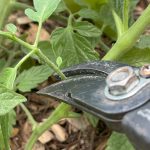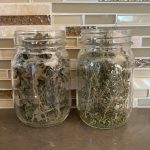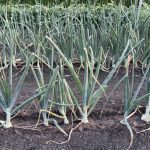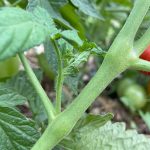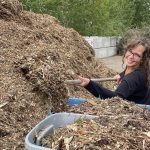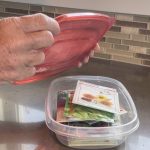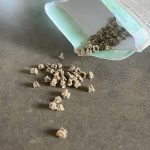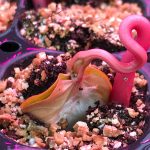Fresh tomatoes are one of the glorious benefits of a vegetable garden because there really is nothing like a fresh, homegrown tomato! However, even though tomatoes thrive in our gardens, they can still face some difficulties.
Tomato blossom end rot is one of those frustrating things that can happen to tomatoes, so let’s talk about tomato blossom end rot.
In this blog, we will answer the following questions:
• What is Tomato Blossom End Rot?
• What Causes Tomato Blossom End Rot?
• How can Blossom End Rot be Prevented and Treated?
What is Tomato Blossom End Rot?
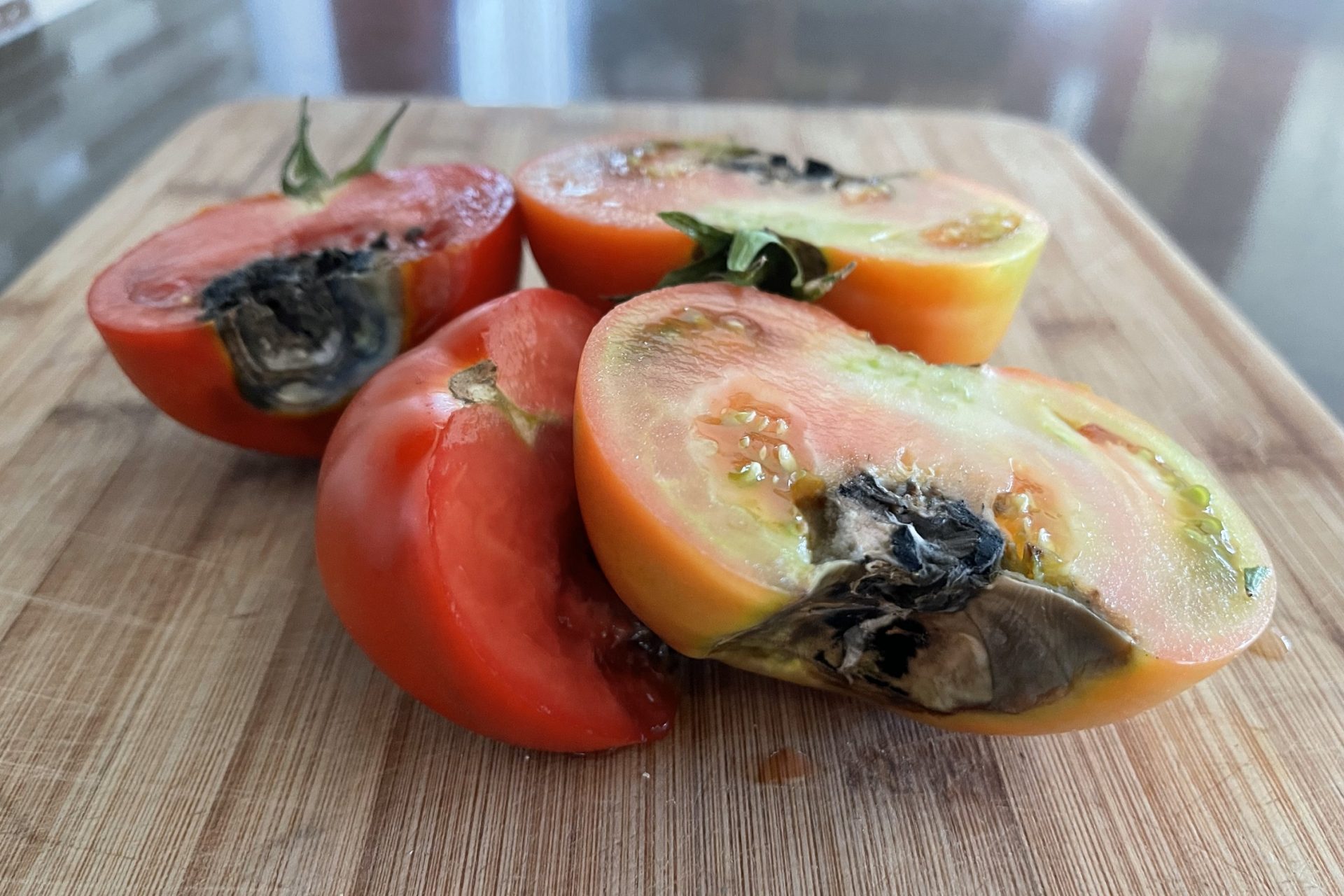
Blossom end rot is a decayed blemish that occurs on the bottom of a tomato where the dried blossom falls off – that’s where the ‘blossom end’ part comes from.
A bubble forms under the tomato skin that initially makes the skin look pale and the tomato flesh eventually turns a greyish colour that morphs into a dried, scabby, rotted brown spot that ruins the tomato.
The good news about tomato blossom end rot is that it isn’t caused by any disease; it’s not bacterial, viral, nor fungal.
Tomato blossom end rot is a physiological event that occurs in response to environmental conditions that compromise the plant’s ability uptake calcium through its roots and move it through its transport system.
Anything that impedes water movement affects the uptake and distribution of calcium.
Calcium is required by tomatoes for healthy tissue formation, and when there is a calcium deficiency, the tomato tissues break down, causing the blistering described above.
This calcium uptake & transport issue isn’t a lack of calcium in the soil but it has to do with its movement in the tomato plant.
The only way to know if soil calcium levels are deficient is by doing a soil sample, but it is rare for actively growing soil to be deficient in calcium.
Cold weather, frigid, oversaturated soil, or drought can affect calcium uptake, too.
Hypergrowth due to excessive nitrogen fertilizer can also affect the transpiration system.
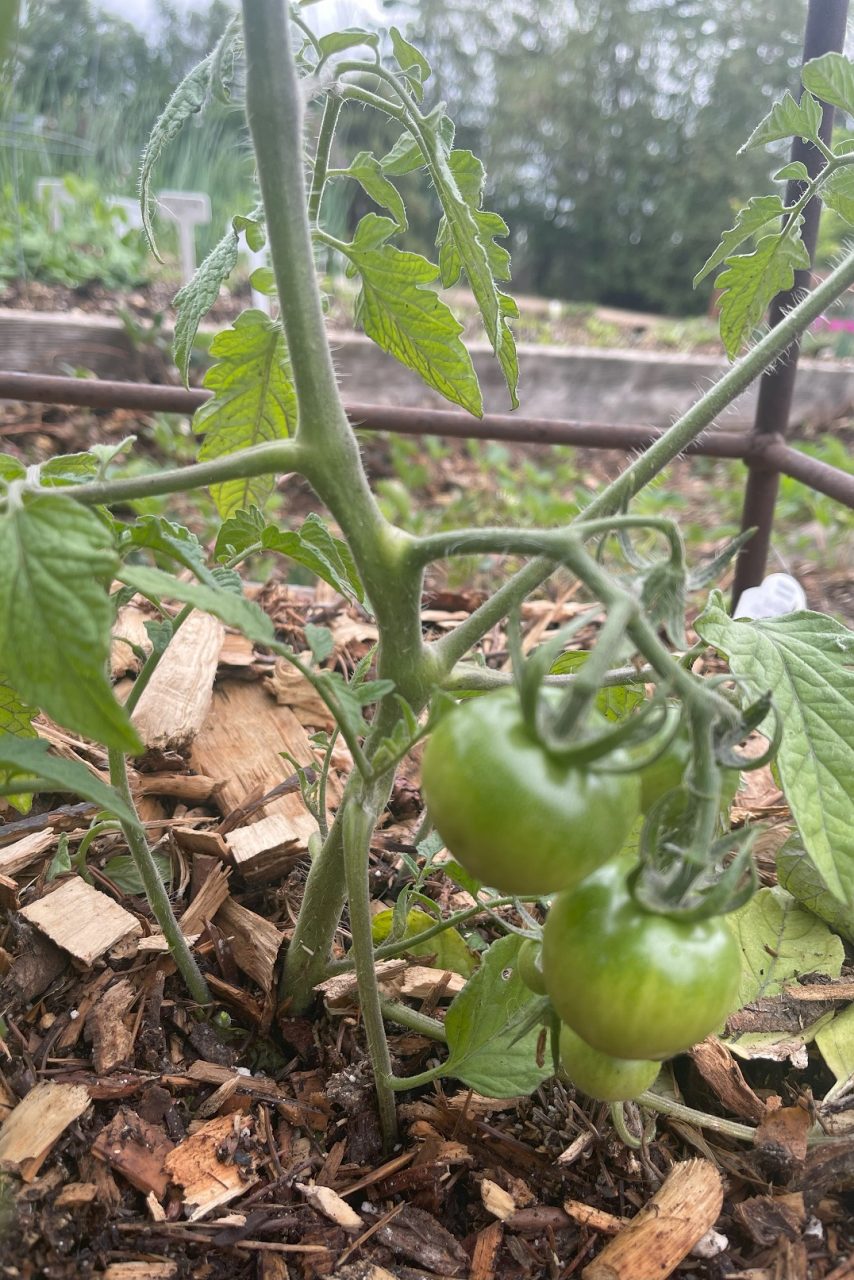
Let’s look at the three main causes of tomato blossom end rot.

Want the inside scoop on more gardening tips? Get early access to all my blogs and exclusive content by signing up for my newsletter!
3 Causes of Tomato Blossom End Rot and Their Fixes

Tomato blossom end rot usually happens during the first part of the tomato growing season, amid July and early August, as the plants get established in gardens.
Blossom end rot happens more frequently with determinate tomatoes that have a large flush of tomatoes over a 2 or 3 week period, than with indeterminate tomatoes that bear consistently over a longer time.
Once you see the blossom end of a tomato soften, blister and begin to discolour, remove it immediately from the vine.
Discard or compost the affected tomatoes and let the plant grow new, fresh, healthy tomatoes.
With proper tomato plant care, blossom end rot can be prevented and corrected.
Let’s look at the three most common causes of tomato blossom end rot and their fixes.
1. Uneven Watering Can Cause Tomato Blossom End Rot
Tomatoes are thirsty plants that grow best in well-draining soil where water and nutrients are consistent.
They rely on a steady supply of water and fertilizer.
Erratic watering cycles that yo-yo between drought stress and oversaturated soils contribute heavily to the development of blossom end rot.
How to Maintain Even Hydration Levels in Tomato Plants
Check tomato soil moisture daily and hydrate tomato plants thoroughly as needed.
Tomatoes grow better with deep drinks of water every other day than shallow watering.
Monitor tomatoes in hot, dry weather. They will often need to be watered daily and sometimes twice daily.
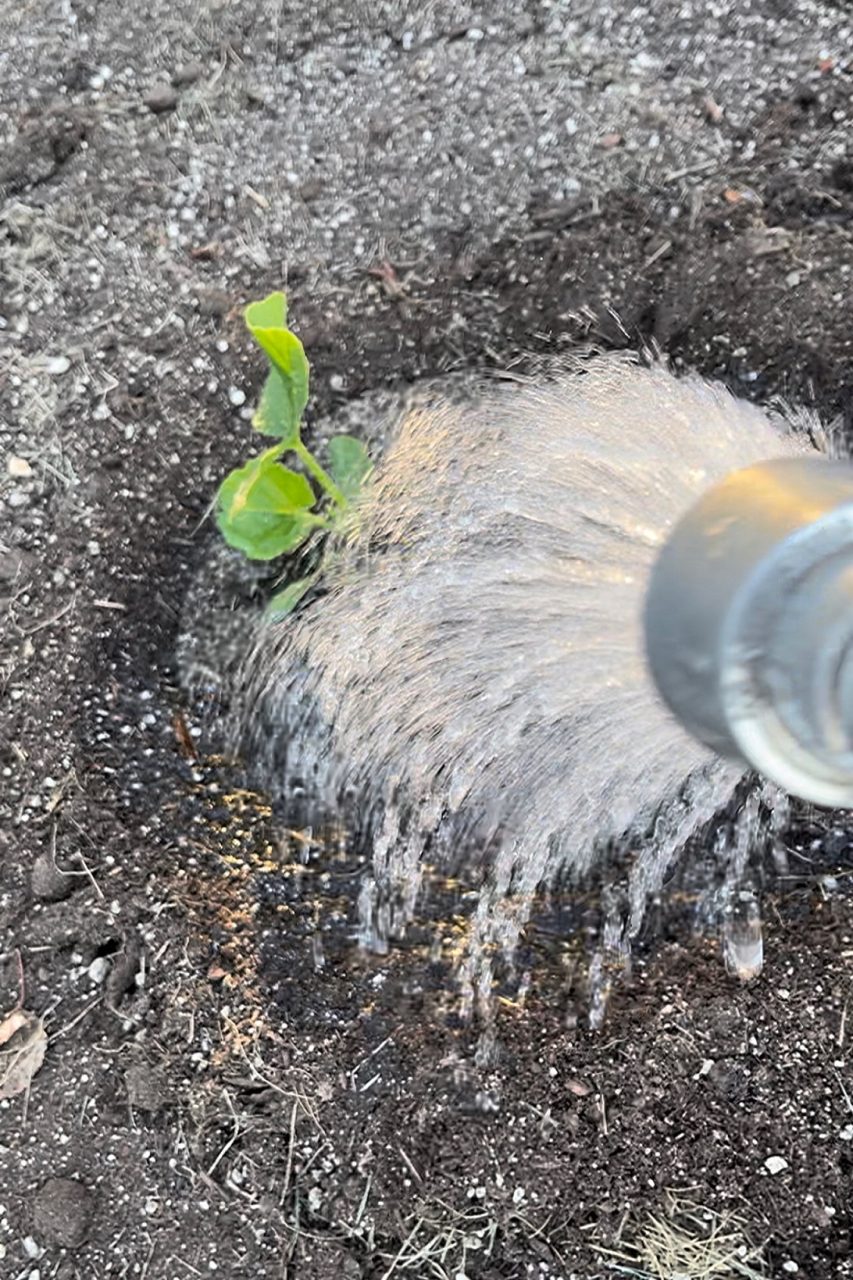
It is unhealthy for tomato plants to reach the point of full flagging wilt, it negatively affects growth patterns and it contributes to water and calcium movement disruptions.
Monitor tomatoes grown in pots closely because soil in pots dries out faster than raised beds or in the ground.
Mulch is a beneficial addition to maintain soil moisture, whether the tomatoes are grown in the ground, raised beds, or pots.
Related: What is Mulch? Making Gardening Magic with Mulch
2. Tomato Root Damage Contributes to Blossom End Rot
Healthy roots are foundational to healthy plant growth. Root damage compromises calcium uptake and transport. The more compromised the roots are, the more their ability to uptake water and nutrients is affected.

How to Prevent Tomato Root Damage
Transplant tomato plants gently to keep root injury to a minimum.
When working in and around tomato plants, be gentle to the area surrounding the stem because tomato roots grow shallowly near the top of the soil and it is easy to damage microscopic root hairs as they extend out laterally from the stem.
Gingerly loosen tomato roots from their pots when you plant them. If they are stuck in the pot, water the pot well and they should release easily.
Gently place the tomatoes in their growing location, being careful not to squish, squeeze, or crush the roots.

Want the inside scoop on more gardening tips? Get early access to all my blogs and exclusive content by signing up for my newsletter!
3. Too Much High Nitrogen Fertilizer Can Cause Blossom End Rot

High nitrogen fertilizer can put tomatoes into growth overdrive with excessive green growth causing stress to their water and nutrient transpiration system.
Fertilizers with a high nitrogen content sourced from ammonia also tend to compete with the roots for calcium uptake.
How to Fertilize Tomatoes
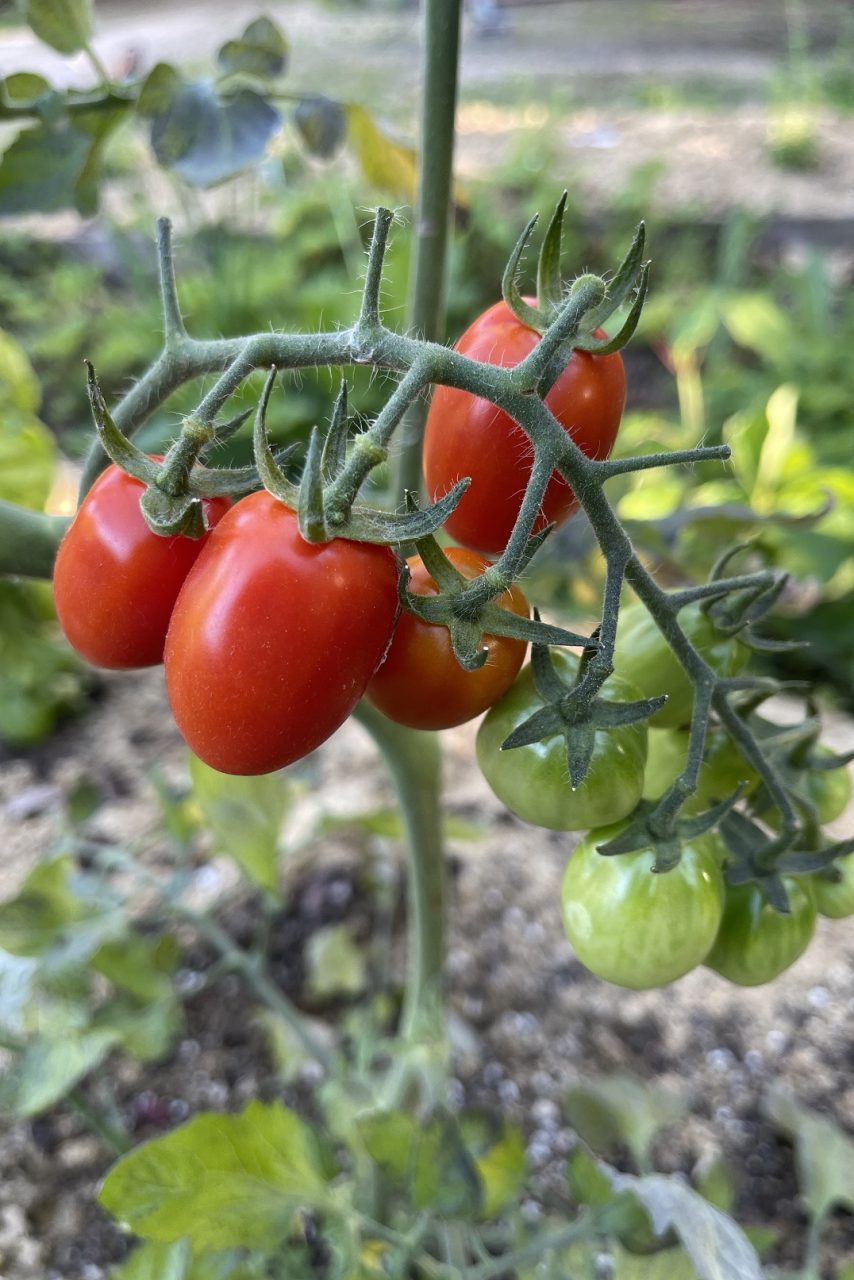
Tomatoes are ‘heavy feeders’, meaning they have high nutrient requirements because they grow and produce so rapidly.
Here are some ways to keep tomatoes well nourished:
- Set up a schedule to fertilize tomatoes weekly.
- Use organic or natural fertilizers, as this is a food item that you will eventually consume. Whatever nourishes your food plants eventually nourishes your body.
- Avoid high nitrogen fertilizers, that’s the first number in the sequence of three printed on fertilizer labels.
- The nutrient that encourages fruit formation is phosphorous, the middle number on fertilizer labels.
- Fertilizer sequences like 10-10-10, 2-3-1, 4-12-14, 8-16-18, and Nature’s Source Plant food work well for tomatoes.
Related: How to Understand Fertilizer Labels, What is the Best Way to Fertilize Plants?
For more details on general tomato care, check out, How to Grow the Best Tomatoes in Alberta.
How to Deal with Tomato Blossom End Rot
Tomato blossom end rot results from compromised calcium movement and the improper use of calcium in tomato plants, commonly caused by root damage and inconsistent watering practices. If you’re experiencing tomato blossom end rot, you’re not alone! It’s a very common issue found when growing tomatoes, but it’s also relatively easy to avoid.
It’s good to know that tomato blossom end rot can be mitigated with gentle handling during the planting process, through uniform watering, and proper tomato nutrient care. If you have any questions about growing food, check out my other blogs or reach out, I’d love to chat!
©Sharon Wallish Murphy ©Gardening with Sharon


